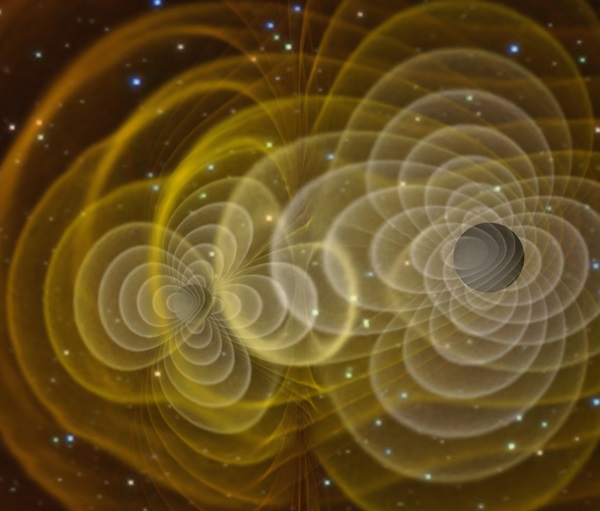Key Takeaways:
Specifically, two researchers have shifted away from detecting individual gravitational-wave events, and are now focusing on the bigger picture. In a paper published in the journal Physical Review X, the researchers outline a new and highly sensitive technique for detecting the faint hum of the more than 100,000 gravitational-wave events that are believed to occur in the universe each year. Though the novel technique will not allow them to hone in on individual gravitational-wave events (like LIGO and Virgo), it will give them the information they need to put constraints on both the distribution and merger rate of black holes throughout the universe.
According to the paper, “Roughly every 2-10 minutes, a pair of stellar mass black holes merge somewhere in the Universe. A small fraction of these mergers are detected as individually resolvable gravitational-wave events by advanced detectors such as LIGO and Virgo.” However, the rest of the waves all get jumbled together, creating a faint cosmic buzz referred to as the gravitational-wave background.
“Measuring the gravitational-wave background will allow us to study populations of black holes at vast distances,” said co-author Eric Thrane, an astrophysicist from the ARC Centre of Excellence for Gravitational Wave Discovery (OzGrav) and Monash University, in a press release. “Someday, the technique may enable us to see gravitational waves from the Big Bang, hidden behind gravitational waves from black holes and neutron stars.”
The new method for detecting the long-sought-after hum of countless gravitational waves depends on sifting through seas of noisy data and teasing out any signals coming from previously hidden black holes. But to do this, the researchers need an extremely powerful supercomputer.
Fortunately, that’s exactly what they have in the form of the new $4 million supercomputer known as OzStar. According to a statement from Matthew Bailes, director of OzGrav, “In one second, the machine can perform 10,000 calculations for every one of the 100 billion stars in our own galaxy.” Furthermore, he said, “It is 125,000 times more powerful than the first supercomputer I built at the institution in 1998.” By combining their innovative technique with such a powerful device, the researchers estimate the new method for detecting gravitational waves will be 1,000 times more sensitive than other detectors.
However, at this point, the researchers have only tested their new technique on data generated through computer simulations of faint black hole signals. But within that simulated data, they found unambiguous evidence of black hole collisions emerging from the background noise.
Though the technique still needs to be proven with real data, co-author Rory Smith, an astronomer at OzGrav and Monash University, is confident the method will make a true detection. According to Smith, recent advancements in high-speed data analysis will allow astronomers to finally detect “what people had spent decades looking for” — the faint but persistent hum of the gravitational-wave background.

Want to know more about the bizarre objects scattered throughout the universe? Check out our FREE e-Book: Exotic Objects: Black Holes, Pulsars, and More!.










